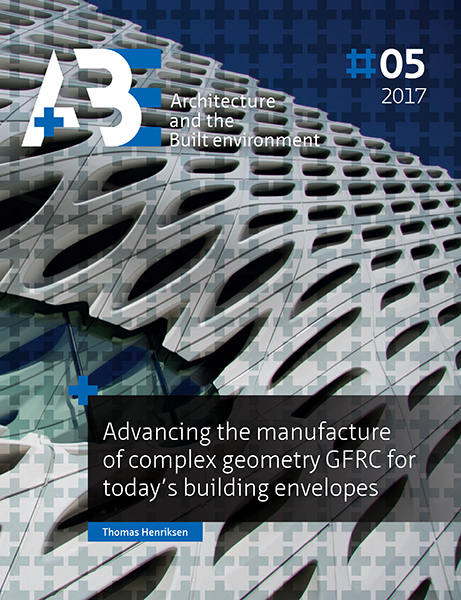Conclusion
DOI:
https://doi.org/10.7480/abe.2017.5.3644Abstract
The literature review for this research work has shown that there is a substantial body of research in the field of GFRC with a focus on its material behaviour. Advances and innovation in GFRC for application in the building industry was missing, so this work has advanced the material research considerably by taking the latest state-of-the-art material research and applying it to fabrication processes in the building industry and aligning it with today’s architectural demands for complex geometry thin-walled GFRC. Initial research identified state-of-the-art production technologies, and advantages and disadvantages were collated to identify the manufacturing method optimally suited to the production of complex geometry thin-walled GFRC panels. The conclusions of this research work should enable designers to realise complex geometry building envelopes at a lower cost using thin-walled GFRC panels with the high degree of complexity demanded, while providing the industry with solutions that advance the processes of manufacturing thin-walled complex geometry GFRC.

